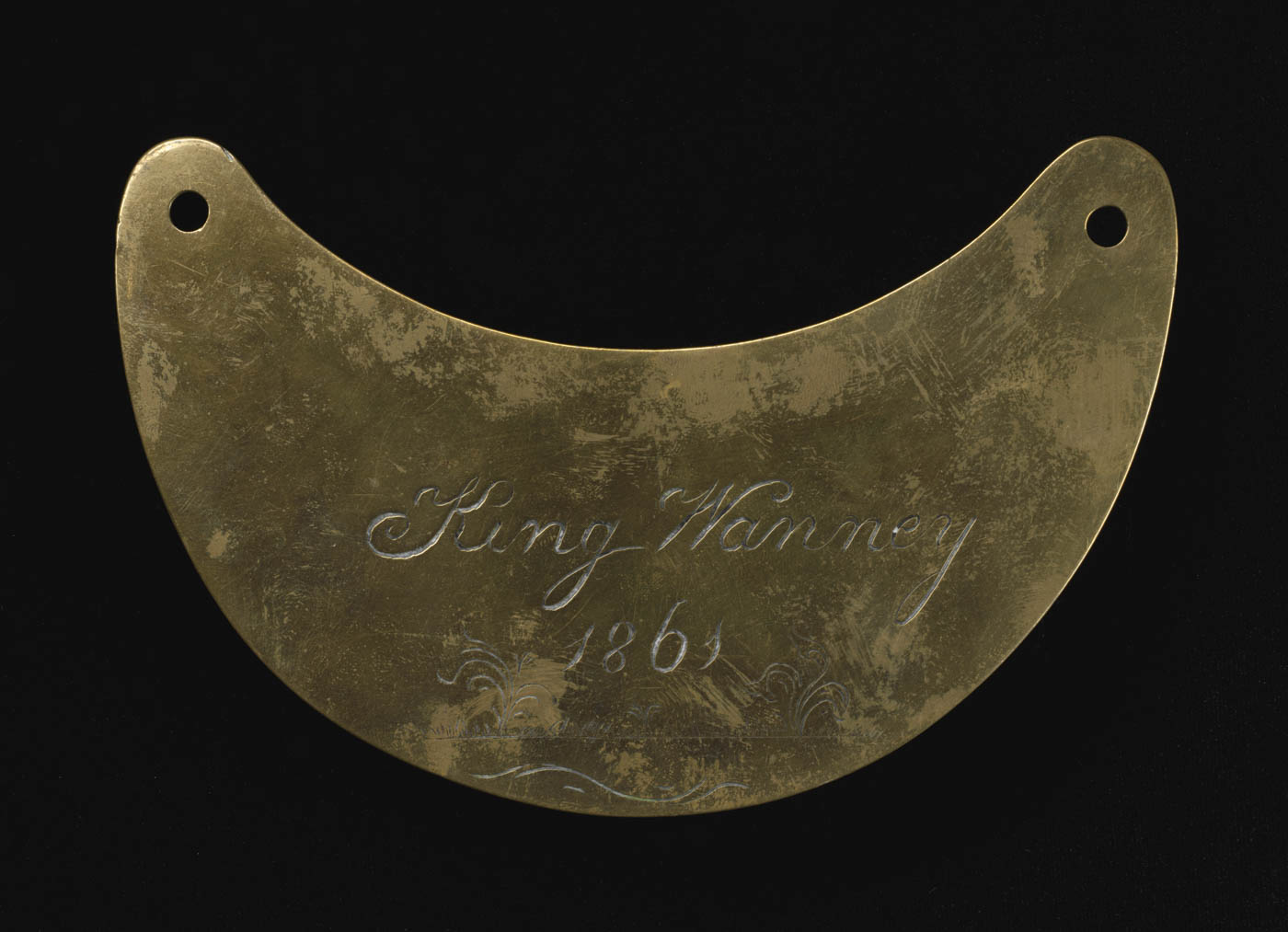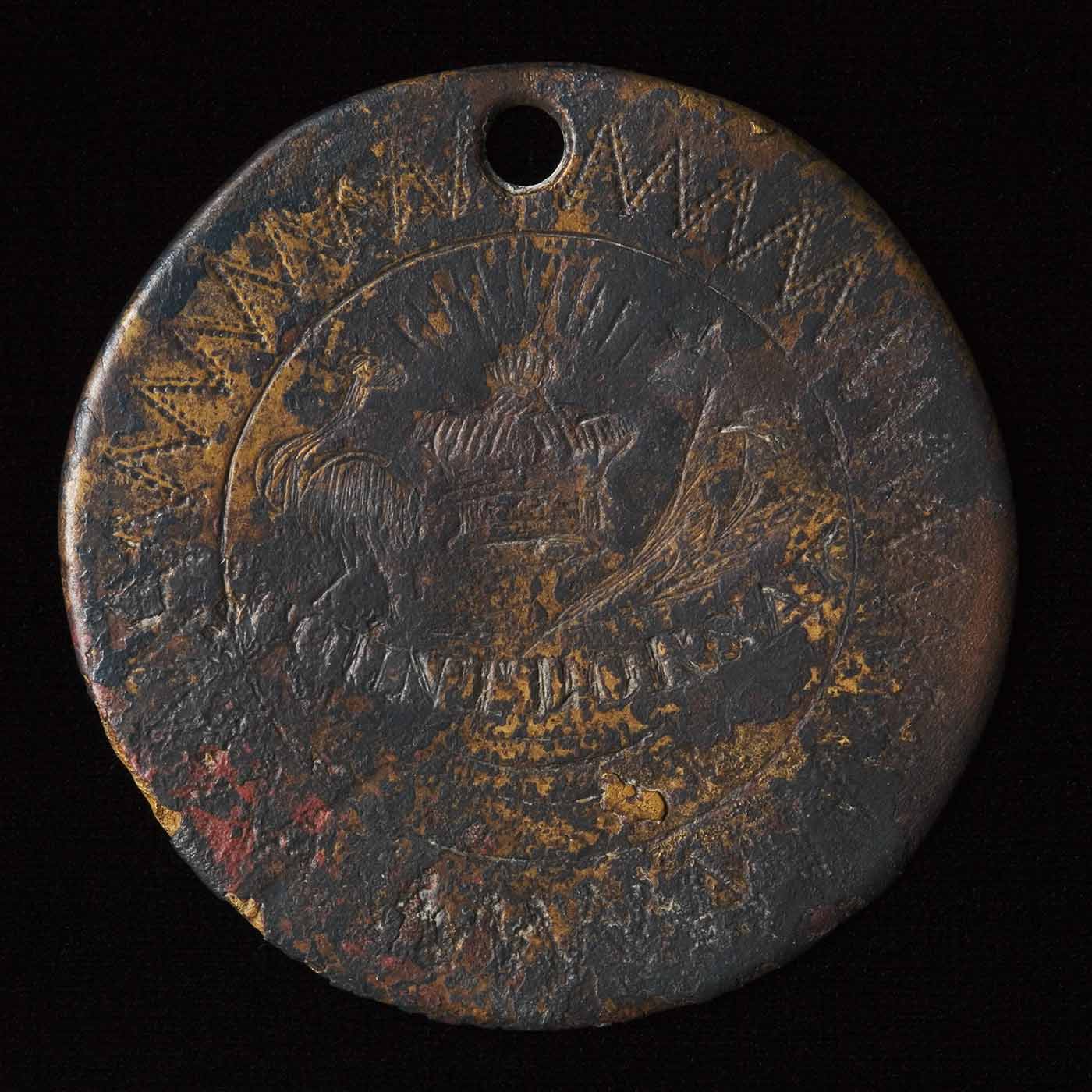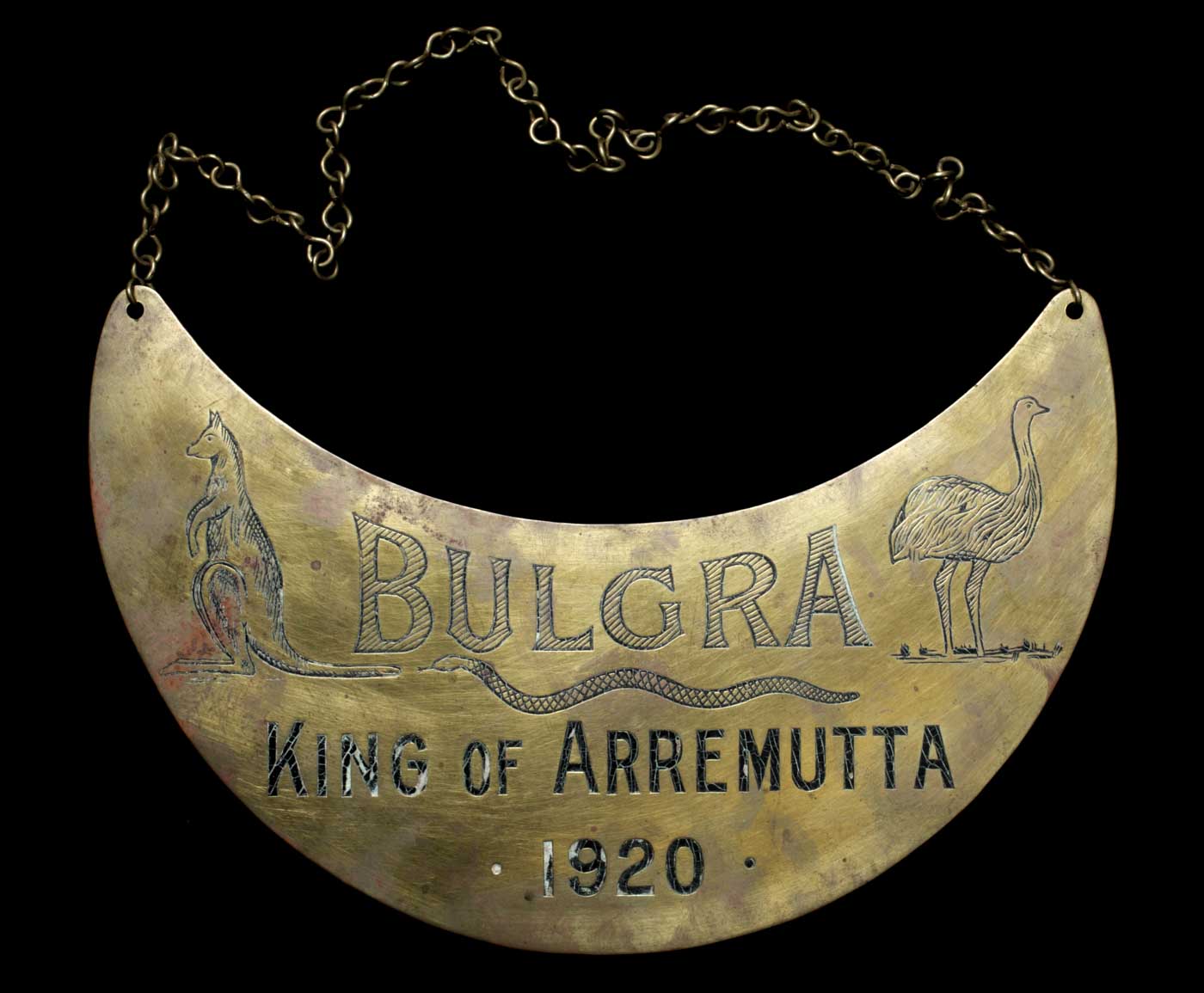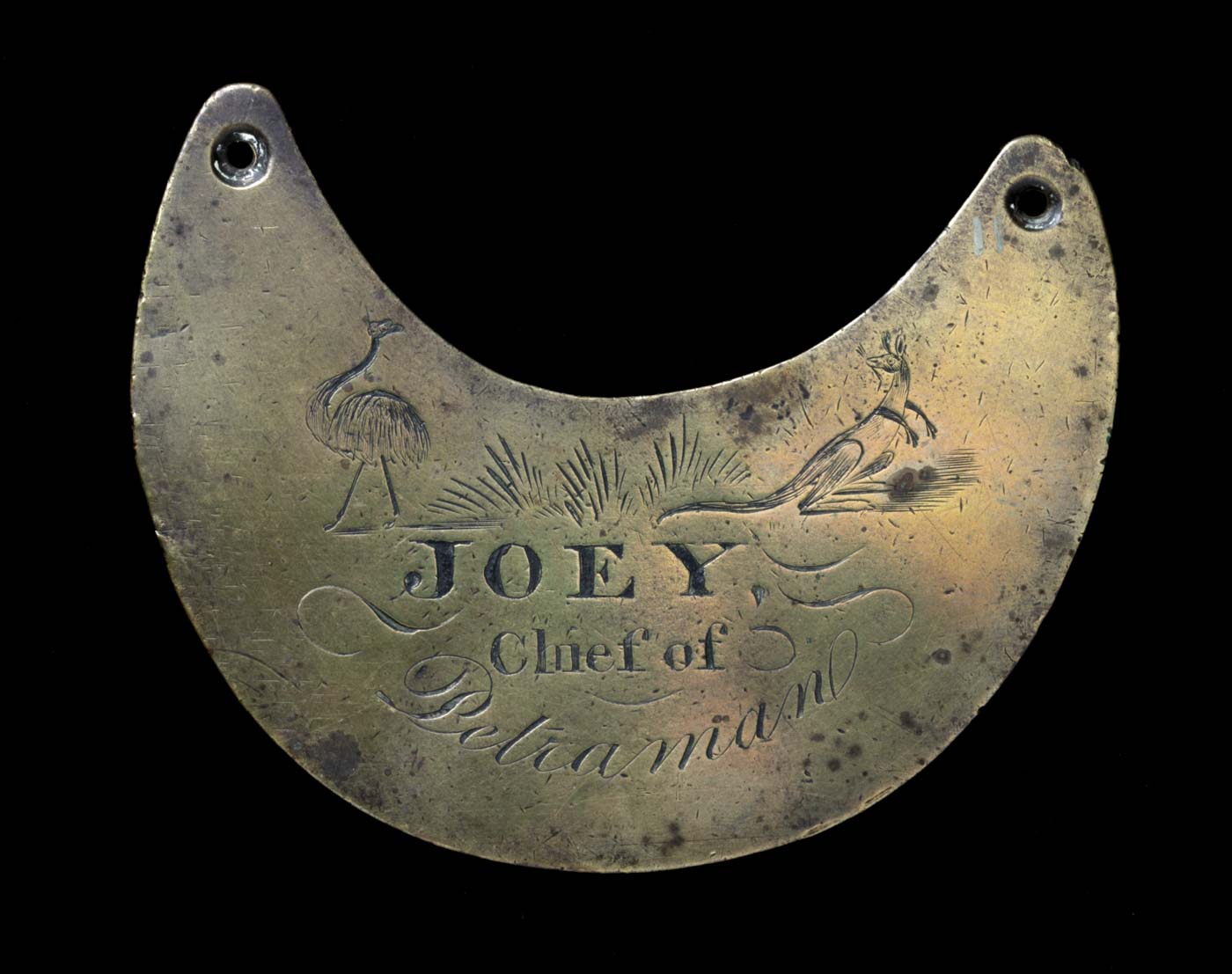See images and information about breastplates in the National Museum's collection, from unknown locations.
Bulgra, King of Arremutta
Of all the gorgets in the Museum’s collections this is the most modern in appearance and is the only one firmly dated. The inscription includes the date 1920.
It is a sawn brass plate with an inscription and design very much in keeping with 1920s graphic art. Its style suggests it is the work of a graphic artist. The human-like eye and eyebrow on the emu and the kangaroo give the figures an engaging character.
No information about Bulgra or Arremutta has been uncovered. Arremutta may have been the County of Arrawatta in northern New South Wales:
Arrawatta, a county in the Eastern and Central Divisions of the colony ... Arrawatta Creek, a tributary of the Severn River, flowing through good agricultural land from Wellingrove to Warialda, near the junction of Strathbogie Road. [1]
Joey, Chief of Petraman
This is a very old sand-cast brass gorget which is very similar to several other plates in the Museum’s collection.
Its age is indicated by the amount of wear on its surfaces and more particularly the early to mid-19th century style of lettering and design. The popular emu and kangaroo motifs are its only decorations.
Nothing else is known about this gorget, its owner Joey or the place Petraman.
Footnotes
[1] W Hanson, Geographical Encyclopaedia of New South Wales, Including the Counties, Towns, and Villages, within the Colony, with the Sources and Courses of the Rivers and their Tributaries, Ports, Harbours, Light-houses, and Mountain Ranges, Postal, Money Order and Telegraph Offices, and Savings Banks, the Railways and Stations on each Line, the Public Schools, and the County in which each School is Located, with a Map, and Diagram of Light-houses on the Coast, Government Printer, Sydney, 1892, p. 8.



